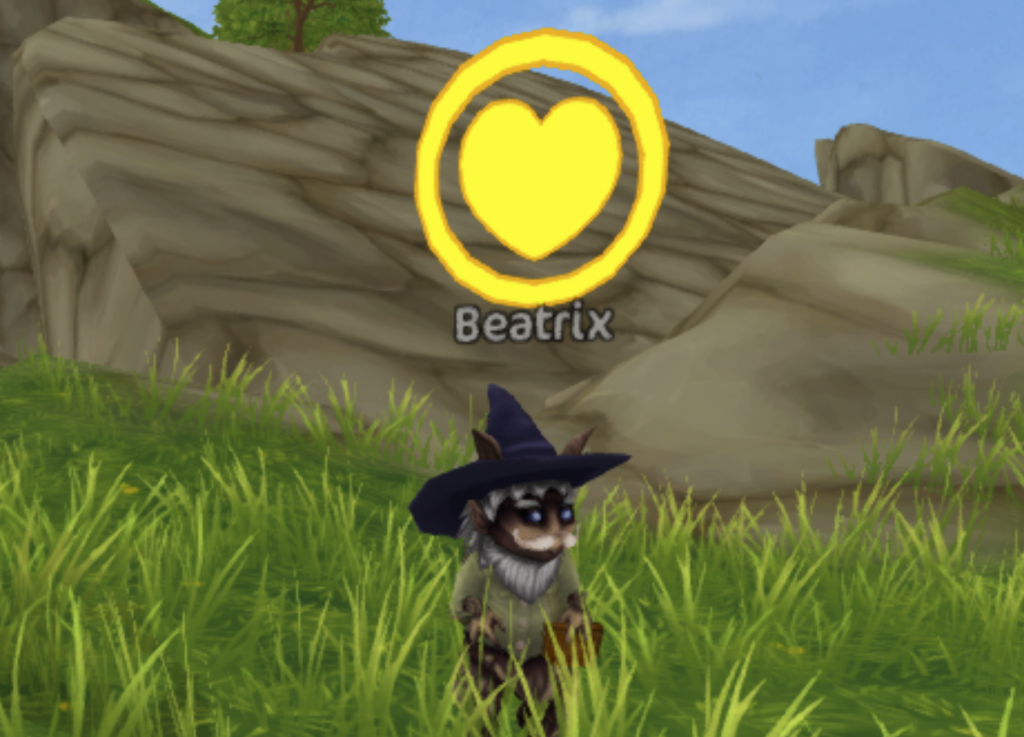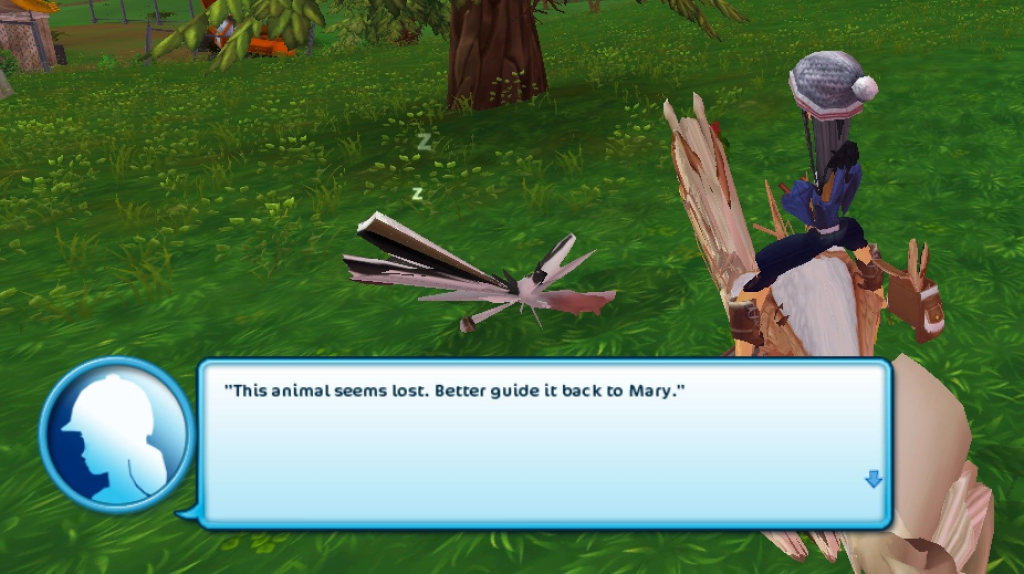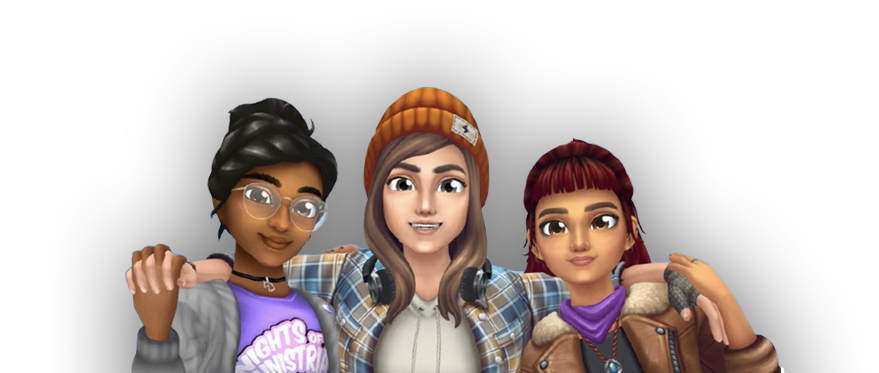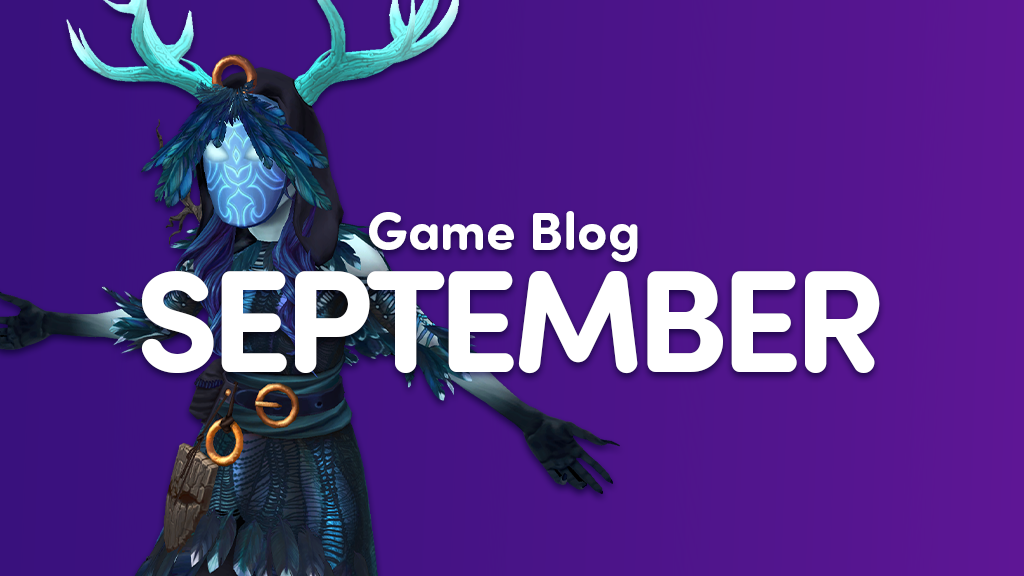Read our latest blog, all about Horse Progression, those pesky bugs and a behind-the-scenes look at one of our latest quests.
Lies diesen Artikel auf Deutsch!
Horse Progression
By Ashton McAllan – Game Designer & Bretton Hamilton – Lead Systems Designer
Good day Starfam! This is Ashton McAllan, Game Designer, and Bretton Hamilton, Lead Systems Designer! Today we’re discussing the next stage of our Horse Bonding Initiative.
Star Stable is all about the magical bond between you and your horse. Earlier this year we decided to start at the beginning of horse bonding by improving the horse purchasing process, and letting you select the age and gender of your horse when you first meet.
Our next focus is going to be how that relationship progresses. In Star Stable not only do players have XP and levels, but so do the horses! For us the horse XP and levels don’t just mean a horse’s power level, they represent the growing strength of the relationship between rider and horse and your ability to work and move together as one.
To start with, if a horse’s XP and level is all about the bond between you and your horse, then caring for your horse should help build that bond, so we’re adding an XP bonus for any horses you care for by hand. Stable Care will still keep all your horses happy and content, but spending time with a horse and caring for them yourself will grant that extra special bonus.
For anyone who enjoys racing and has lots of horses to race with, we’re taking the reins off races! We want you to be able to spend as much time training with your horses as you like, so we’re updating the rules around competing in races. You will now be able to compete in daily races multiple times per day, once for each of your horses.
Plus, competing in those races should be more fun (I mean faster; More speed = more fun) for lower level players as we are increasing the minimum speed for low level players and horses. Level 1 Players with low level horses will still be slower than everyone else, but at least you’ll feel like you’re riding a horse instead of a fancy snail!
While many players love races, leveling horses is usually limited only to players who have a real dedication to racing. We want everyone to level up and build a bond with their horse, so we will reward players with horse XP, simply for spending time with their horse. You will be building a bond with your horse whether you’re hanging out at Steve’s Farm socializing, roleplaying with friends, or just advancing the main quest. Dedicated racers will also benefit as leveling will be just a bit faster than it already is today!
But a number that shows the strength of the bond between you and your horse isn’t very impressive if it doesn’t change anything, so we’re also updating the rewards for each horse level. When your horse gains enough XP for a new level, we’re going to give you a button to actually level that horse up, and we’ll show you what new features you’ve unlocked for that horse!
At lower levels you will unlock the faster gallop speed, and the lead rope to lead your horses around (players who have purchased the lead rope with Star Coins won’t need to unlock this, you already have it for all your horses).
Then as your bond grows stronger some breeds will unlock their special gaits or moves, and all horses will unlock the ability to have your horse follow you, without needing a lead rope at all!
Eventually the connection between you and your horse will grow strong enough for you to be able to call your active horse to you from anywhere in Jorvik, with just a whistle.
Then, when your horse reaches max level, we’ll introduce a special celebration with you and your horse to highlight the relationship you’ve built together.
In between all these special features horses will gain speed increases every few levels, and we’re going to celebrate each new level with fancy new visual effects so everyone can see the blossoming bond between you and your horse.
We’re really excited to be working on these updates to help you feel a stronger sense of connection between you and your horse growing as you play, and hopefully we’ll be able to have some of these updates in your hand soon! The Horse Bonding Initiative continues! After our first big release with these updates, we will look at polishing and refining some of our work with Horse Purchasing and Horse Progression! It’s too soon to hint at what the next big project will be, but we assure you that we will focus on making horses even better in Star Stable.
The design team would love to hear your thoughts and feedback!
What features are you most excited for? What feature do you think we could add to improve your connection to your horse?
One of Our Witches
By Pablo Gadea – Game Designer & Harri Jokinen – Game Content Designer
Hello again, players! I’m Pablo Gadea. You may remember me from May’s Blog Post! This time I’m joined by my fellow Game Designer, Harri Jokinen, who has been at the company since May 2021.
We’ve been working on multiple quests, including On the Trail of Anne, Sabine’s quest in the Equestrian Festival, and the recently released One of Our Witches – which is what we want to talk about. First, we want to mention that this blog post is written from the point of view of the designers, who mainly implement the content. All of these releases were a collaboration between different creatives; narrative, sound design, art, etc. Many decisions go into making a project, and good communication is key for content creation.
I will now let Harri talk about his views on what we worked on!
For many players, the main quests are their favorite SSO content. We felt a lot of pressure when we started working with them! We want to produce the best possible content within our current constraints and improve the overall gameplay experience in SSO.
Chasing the crows is an excellent example of what we mean by this. It was a passion feature that I prototyped on my own. I wanted to empower players and give them direct interaction with the world. This would not be “combat,” but something like that in terms of “player feel.” I believe there is still a lot of untapped potential in the Soul Rider powers. I also wanted to show the Soul Riders working together through gameplay, with Alex zapping the crows alongside the player. We hear a lot of feedback that other characters usually leave the work for the player, riding ahead and leaving our character to deal with problems alone.
Another gameplay highlight for me was the puzzles inside the Fort Maria library. We were humbled by the players’ response to them and seeing how they enjoyed this new type of interaction. It required a joint effort between us designers, artists, writers, and audio designers to figure out how to realize the puzzle-solving mechanics.
Everyone on the team did an outstanding job, especially with the library. The whole location is just magical, and we can’t wait to explore it even more. The writers also outdid themselves; the amount of dialogue and quality is crazy high. Now, I’ll hand out the mic back to Pablo.
While gathering feedback from previous quests, we read some negative reviews about the time it took to complete them. So, we asked ourselves: Is there any way we can make them longer while still keeping things interesting?
In this story, we meet a new and lovely character: Beatrix. After meeting her (previously having trapped her), we ask her to lead us to her home, the library. Narratively, it made a lot of sense for her not to do this straight away.
With all of this in mind, we proposed to try a reputation block, allowing the player to play around with Beatrix and some other NPCs and allowing us a chance to test the functionality and reception of the mechanic.

The fact that it was right before Fort Maria, the highest point of expectations on this quest, wasn’t a coincidence either. It was meant to build up the hype.
Now, everything on the reputation blocker was very deliberate. To name a few things: the dailies give Player XP, it only takes four days (if you started on Wednesday, you’d continue on Saturday), and every quest is unique. I made seven variations for both quests, so you’d never do the same thing in the same place. Some of them might never be seen, but that’s the level of detail we’re going for.
Some other stuff didn’t work as well as I thought it would, like not including a progress bar. It’s possible to ask Beatrix about the reputation level, but that wasn’t enough. Now I know this, and we’ll improve on it. And never fear; not all quests will feature a reputation blocker! We aim to surprise and delight you, so we try to approach every quest with fresh ideas.
Returning to your feedback: When there are months between releases, it’s hard to keep track of the characters, plotlines, and everything going on. Several team members worked on a new way for SSO to address that concern without taking up too many design resources. Our solution?
We decided to create six very small, dialogue-oriented quests to keep the story fresh in your heads. They’ll continue to be released until the next Main Quest is ready to go live. Not only will we drop some lore to help you with the next adventure, but you’ll also score some awesome XP!
Now, moving on to the upcoming Main Quests we will release! We continue with our efforts to create exciting and engaging experiences for you.
There are even greater revelations and encounters in store. The line between friend and foe becomes blurred as encounters reveal hidden complexities and motivations.
On the next Main Quest, the Soul Riders will try to find the way to the Vala. New and amazing discoveries await.
Ride with us as this epic adventure continues to unfold!
Journey of a Bug: How are they caused? Do they get fixed? Let’s find out!
By Timothy Arvidsson – QA Engineer & Ali Farha – Technical Producer
Bugs. I’m sure we have all seen and experienced those pesky things from time to time. The truth is that bugs are a natural part of any software development process. Humans are not perfect, so errors made during design and development can lead to failures that you experience as a player.

There are a lot of steps needed to mitigate this, but by far, the biggest one is testing. With every piece of content and code change, an embedded tester (our dedicated quality assurance professional in the team) is ready to validate the changes and ensure nothing else has broken. Some of us work with new horses, some with new story quests, and others with tech such as our game engine or internal tools.
But you might well wonder if we did our jobs. How come you still see bugs in the game?
One of the main testing principles is that you cannot test everything. We tend to prioritise testing around the system or feature which was changed, with things seemingly unrelated to the changes receiving less attention. A wild card in all of this is called edge cases, also known as corner cases. Edge cases are the extreme, the unusual, the unexpected; how someone might interact with a system or a feature in a way we did not expect.
Identifying and then testing these edge cases can be incredibly difficult and time-consuming, but we try our best.
We, as testers, are not perfect either, and so occasionally we might miss something that should have been caught. But in the end, we always aim to stand by the players and help deliver the best possible experience for them.

So a bug is introduced, and you did a better job than us and reported it. What happens next?
This is known as the bug life cycle, which starts with a new bug.
One of the most important aspects of a new bug, which will determine its entire life cycle, is the steps to reproduce it. Think of it like a treasure hunt on an island, and the reproduction steps are the map. The better and more accurate the map is, the quicker and easier it is to find.Keep that in mind while writing your maps for us so we can always, with your help, find our way out!
Time and people are valuable, and fixing any bug requires both. The bugs with the most significant impact tend to be prioritised first as they offer the most critical value.
By communicating with us about which bugs are impacting you, you will help us accurately determine the effect of a bug and allow it to be prioritised accordingly.
Once a bug report has been vetted and given priority, the next step is assigning it to the right team’s sprint. A sprint is a period in which a team commits to doing particular tasks, and the bug has a time slot to be fixed. The process of planning a sprint is a collaborative effort within the team, taking into consideration the overall direction of the game and the wishes of our stakeholders.
Your ticket has now gone through a gauntlet of challenges to check its validity and feasibility. Now it is time for the fun part!
An engineer refills their coffee, cracks a few jokes with their colleagues on the way back to their desk, and finally clicks that button to set your ticket to In Progress.
This brings us back to the reproduction steps and their importance. By reproducing the bug, they start to investigate, looking at which parts of the code are being called and tracing the issue to the faulty piece of code.
It can be as simple as a small typo. In other cases, it can be a fundamental fault in implementing the code, which often requires a lot more work. Extreme cases might even involve reverting entire pieces of code to a previous state if recent changes caused the bug.

When the code fix has been implemented, we do a code review which adds an extra level of quality, and the ticket is ready for the next stop.
By now the bug is nearing the end of its life cycle, which is the testing stage. The tester in the team must validate that the fix has resolved the issue described in the ticket. It may also be necessary to test that the changes have not introduced new problems. We call this regression testing, a regression referring to a step back in quality. This is generally something we want to avoid at all costs. The last thing you want is a bug fix to introduce new problems.
Now that the bug is fixed, does that mean it will be fixed when I log in tomorrow?
Not exactly. The fix has some way to go before it makes its way to our live product. One way to visualise it is to think of a train schedule. Each train represents the code changes we have made since the last train. The fix waits for the next scheduled train. Once aboard, it takes a detour via our release QA department, and then it finally arrives on the live servers.
This oversimplifies our release process, but a more in-depth explanation is a subject for another blog.
Conclusion
Video games are complicated software, and things can (and will) go wrong in multiple ways. However, we always strive to deliver the best quality possible and ensure you experience the game the way we designed it to be. Even when things do go wrong, which understandably is frustrating, we hope that you can be patient and allow us to fix our mistakes.
The time it takes us to do so can vary considerably depending on multiple factors. Some examples being how many players are affected, which platform and the complexity of the bug itself. Due to these factors, while it may seem like bugs which have been reported many times are not being fixed, it is something that we are aware of and actively working on. Sadly a significant effort and time investment is many times required, but we are already working on initiatives which we strongly believe will increase transparency and give more insight into how reported issues are being handled.
In the last year and a half, we have made many changes related to quality, adding a dedicated QA in every team, adding more levels of testing, and investing in our test automation framework. So stay tuned — we hope to share more about our QA work with you in the future!
That was a great read! So much to learn and get inspired by! Stay tuned for more blogs!


